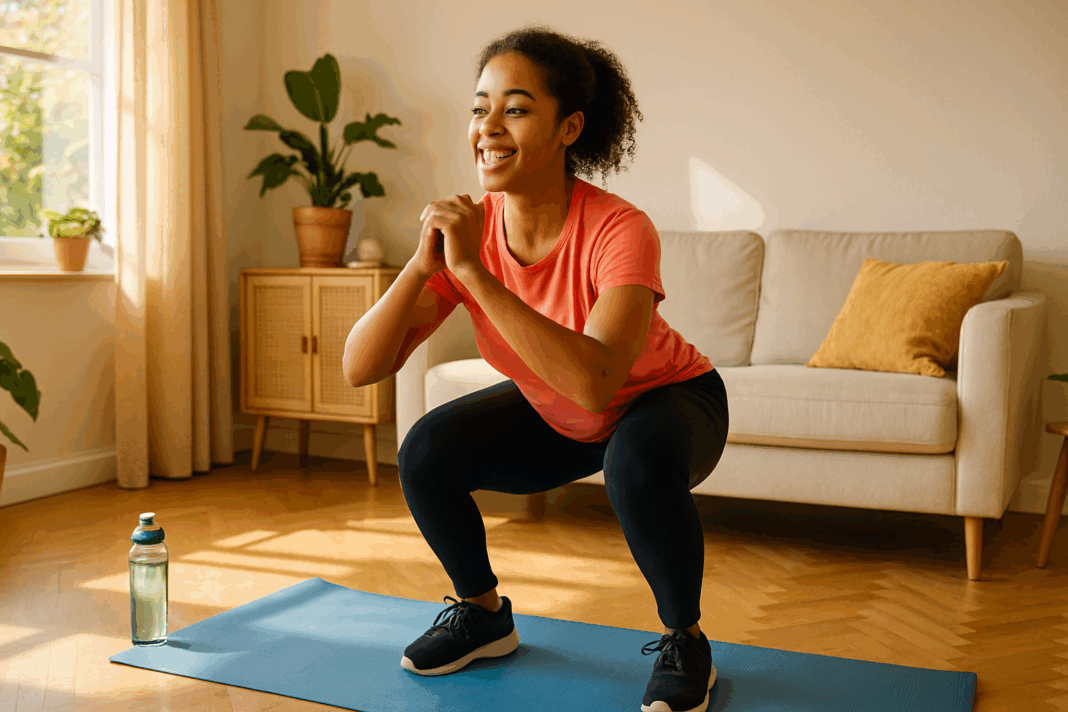In a fast-paced world where time is often a limiting factor, finding an efficient and manageable way to stay fit becomes essential. Building stamina and improving endurance doesn’t require hours at the gym or complex equipment. For those new to fitness or returning after a break, a well-structured 30 minute beginner workout routine offers a simple yet powerful solution. This approach not only improves cardiovascular health but also enhances physical resilience, energy levels, and long-term wellness. By adopting a consistent 30 minute exercise routine at home, beginners can take control of their fitness journey without sacrificing valuable time.
You may also like: How to Increase Stamina and Endurance Naturally: Smart Training Tips and Nutrition Habits That Support Cardiovascular Fitness
While there are countless ways to approach fitness, not all are suitable for those who are just starting out. An easy 30 minute workout crafted specifically for beginners takes into account safety, sustainability, and the progressive development of physical strength. These routines balance aerobic activity, muscular endurance, and flexibility, providing a comprehensive foundation for health improvement. Moreover, accessibility is key—whether through a 30 minute workout video or a list of 30 minute exercise videos curated by experts, individuals can access high-quality guidance right from their living room.

Why Stamina Matters: The Link Between Endurance and Overall Health
Stamina is not merely about lasting longer during a workout. It represents the body’s ability to sustain prolonged physical or mental effort, directly impacting energy levels, immune function, and overall vitality. When stamina is developed through regular physical activity, the heart becomes more efficient, oxygen delivery improves, and fatigue is delayed. These benefits translate into better productivity, reduced risk of chronic illness, and enhanced mood.
Improving endurance at home is not only feasible but also advantageous. Without the constraints of a gym schedule or commuting time, individuals are more likely to remain consistent with their regimen. This consistency is key in building long-term endurance. A 30 minute home workout for beginners can significantly improve cardiovascular function while strengthening the muscles used during everyday tasks, such as walking, lifting, and climbing stairs.
The link between exercise and mental health also deserves attention. Studies show that regular aerobic exercise supports neurotransmitter function and reduces symptoms of anxiety and depression. Incorporating a 30 minute workout for beginners into your daily schedule can boost dopamine and serotonin levels, contributing to a more positive outlook and sharper cognitive performance. In this way, improving physical stamina supports not only bodily health but also emotional and psychological resilience.
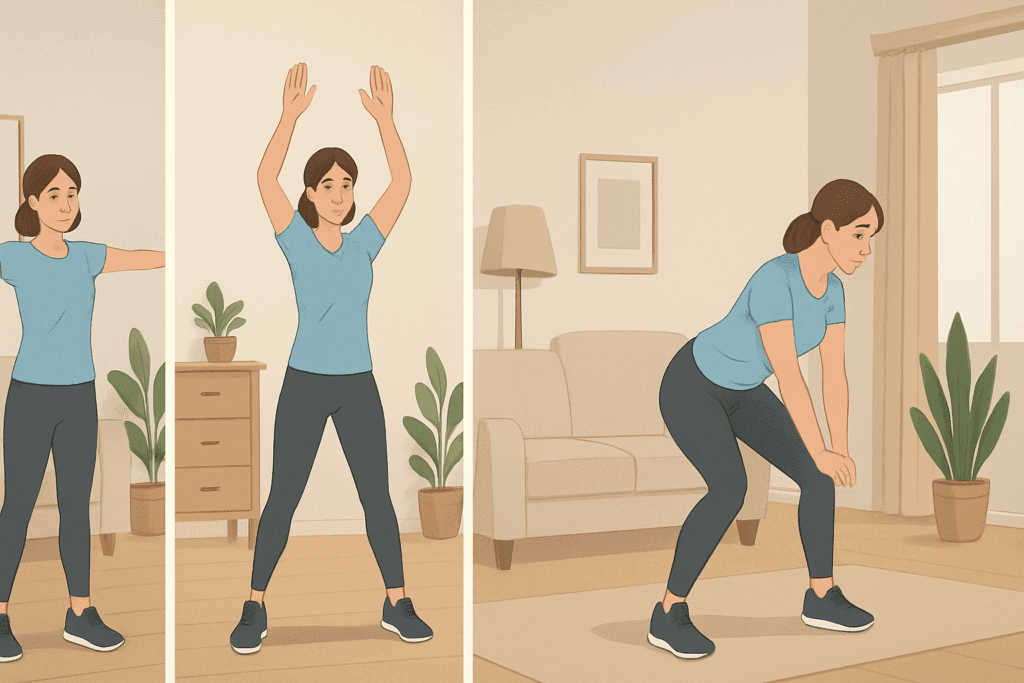
Designing the Ideal 30 Minute Beginner Workout Routine
A well-structured 30 minute beginner workout routine blends multiple components: a dynamic warm-up, moderate-intensity cardio, bodyweight strength training, and a cool-down with stretching. Each segment serves a distinct purpose and contributes to holistic fitness development. The warm-up prepares muscles and joints for movement, reducing the risk of injury. Cardio elevates the heart rate, promoting cardiovascular health. Strength exercises build lean muscle and enhance metabolic rate. Finally, stretching aids recovery and flexibility.
When developing a 30 minute exercise routine for beginners, progression and customization are essential. Beginners should start with low-impact movements such as walking in place, step-touches, or gentle squats. As endurance builds, more challenging exercises like jumping jacks, lunges, or mountain climbers can be introduced. The key is to strike a balance between pushing limits and listening to the body’s signals.
Incorporating interval training—alternating periods of higher and lower intensity—is a highly effective strategy for building stamina. For instance, alternating one minute of brisk marching with 30 seconds of faster-paced movements offers cardiovascular benefit while minimizing burnout. This method is especially useful in a 30 minute exercise for beginners, as it allows for recovery and gradually conditions the body for sustained effort.
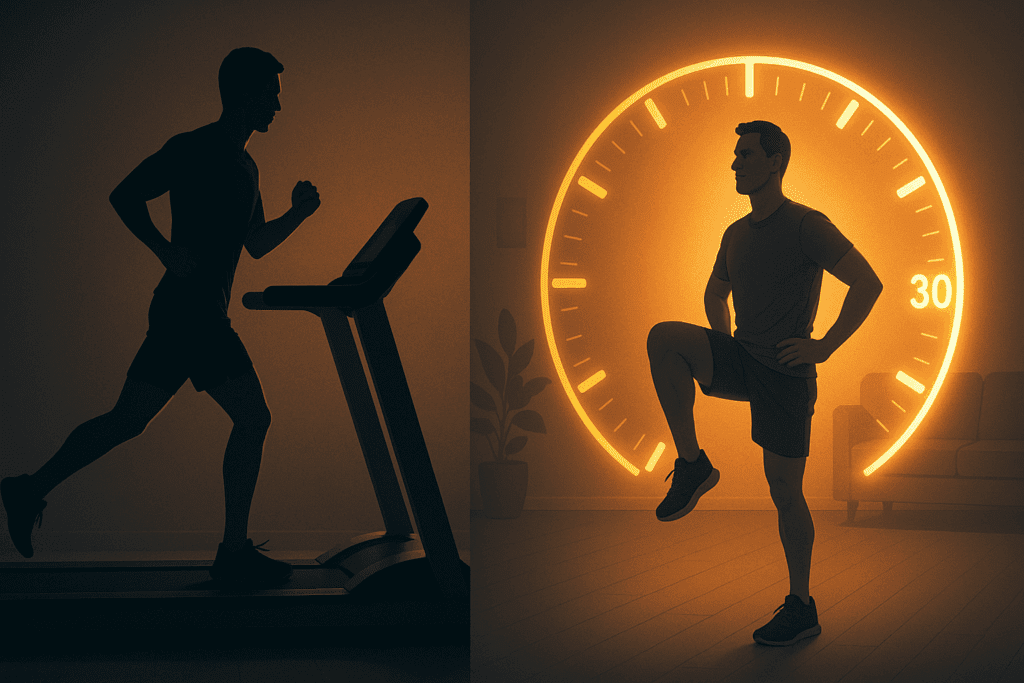
The Science Behind 30 Minute Workouts: Efficiency Meets Effectiveness
Scientific research consistently supports the efficacy of short-duration, moderate-to-vigorous intensity workouts in improving cardiovascular health, muscular endurance, and metabolic function. A 30 minutes workout can trigger physiological adaptations similar to those achieved through longer sessions, provided the effort is consistent and purposeful. For beginners, this approach mitigates the risk of overtraining and fosters confidence through manageable daily goals.
One of the most compelling findings in exercise science is that the first 30 minutes of activity offer the highest return on investment in terms of health benefits. This means that beginners who commit to a daily or near-daily 30 minute exercise routine at home are maximizing their efforts. As the body adapts, the same 30 minute workout video that once felt challenging becomes a benchmark for progress, reinforcing motivation and commitment.
Moreover, incorporating resistance movements such as push-ups, planks, or bodyweight rows into the routine enhances muscle tone and functional strength. Even within the confines of an easy 30 minute workout, such exercises improve posture, balance, and joint stability. These elements are crucial for injury prevention, especially as physical demands increase over time. For beginners, these gains lay the groundwork for more advanced fitness pursuits in the future.
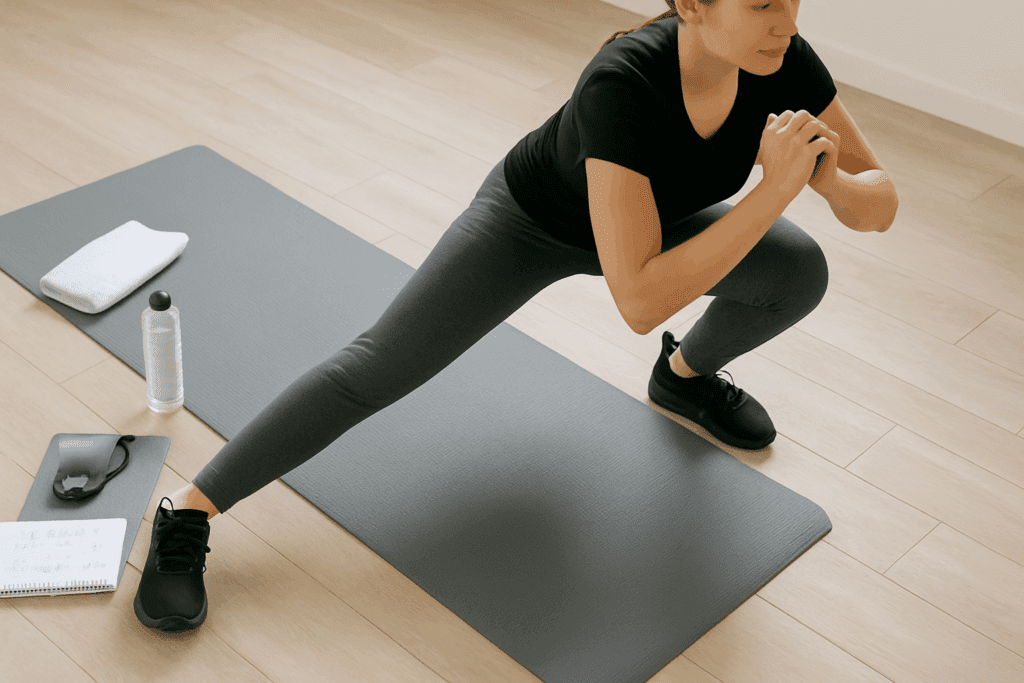
How to Structure a 30 Minute Home Workout for Beginners
Designing a 30 minute home workout for beginners requires careful consideration of time allocation and movement variety. An effective routine might begin with five minutes of dynamic stretching, including arm circles, hip openers, and light aerobic activity such as step-touching or high knees. This primes the body for movement and increases circulation.
Next, a 15- to 20-minute main set can alternate between cardio and strength. For example, two minutes of marching or jogging in place might be followed by one minute of squats, then two minutes of jumping jacks followed by one minute of wall push-ups. This back-and-forth rhythm keeps the workout engaging and maintains heart rate elevation. Movements can be scaled to accommodate individual needs, making it an inclusive approach to fitness.
The final five minutes should focus on static stretching, holding each stretch for 20 to 30 seconds. Key areas to target include the hamstrings, calves, hip flexors, shoulders, and back. Stretching supports recovery, reduces soreness, and improves flexibility over time. Together, these components form a complete 30 minute beginner workout routine that can be performed safely and effectively at home.
Practical Tips for Staying Consistent and Motivated
Building a fitness habit takes more than good intentions; it requires strategy, accountability, and adaptability. One of the most effective ways to remain consistent is to schedule your 30 minute exercise routine at home at the same time each day. Whether it’s first thing in the morning or during a lunch break, routine enhances adherence. Treating your workout like a non-negotiable appointment can make it easier to stick with.
Motivation can also be bolstered by using tools such as a 30 minute workout video or a playlist of 30 minute exercise videos. Following along with a trainer provides structure, eliminates guesswork, and adds a social dimension even in solo workouts. Over time, participants may find themselves more energized and capable, a transformation that reinforces the value of regular exercise.
Progress tracking is another helpful strategy. By noting improvements in stamina, strength, or how long certain movements can be sustained, individuals build a sense of achievement. Journaling or using a fitness app can provide tangible evidence of growth. Additionally, varying the routine every few weeks helps prevent plateaus and keeps the experience fresh and enjoyable.
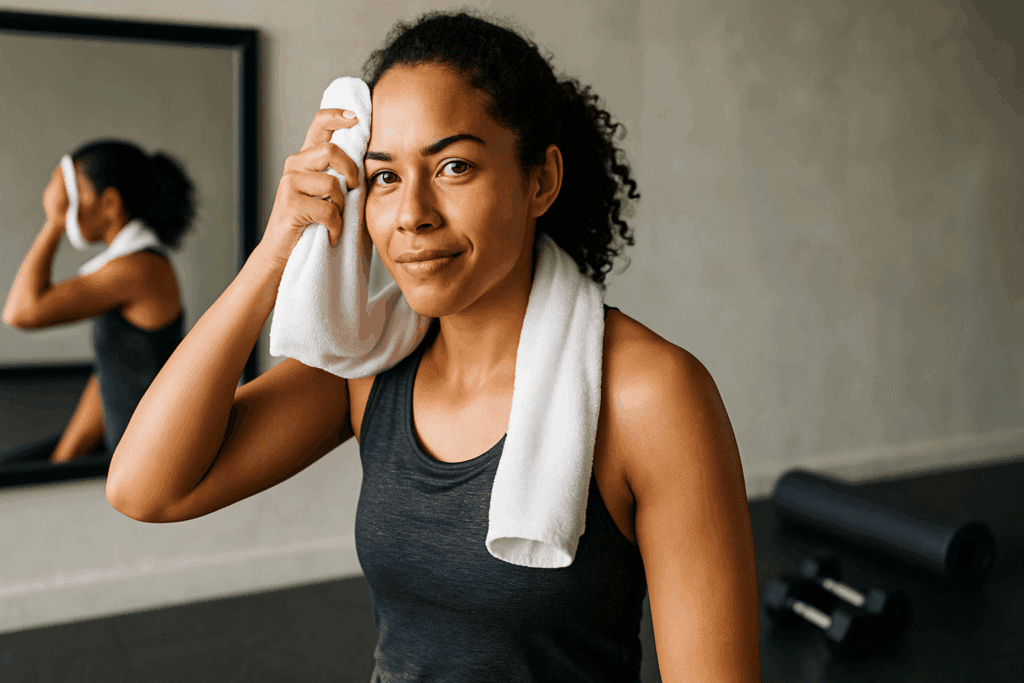
Overcoming Common Challenges for Beginners
Starting a new fitness routine can feel intimidating, especially for those who have been sedentary or are managing chronic conditions. It’s important to recognize that progress often comes slowly at first, and initial discomfort is a natural part of the adaptation process. Choosing an easy 30 minute workout that prioritizes low-impact movements helps reduce barriers to entry and supports gradual improvement.
Time constraints are a common obstacle, but the brevity of a 30 minutes workout offers a practical solution. With no need to travel to a gym or change into elaborate gear, at-home sessions can be completed quickly and conveniently. This makes it easier to integrate fitness into a busy schedule, whether before work, during a lunch break, or after dinner.
Fear of injury is another concern. Proper form, adequate warm-up, and listening to the body’s signals are essential for safety. Beginners should focus on quality of movement rather than speed or intensity. Over time, as control and confidence increase, more dynamic and challenging exercises can be introduced without compromising safety.
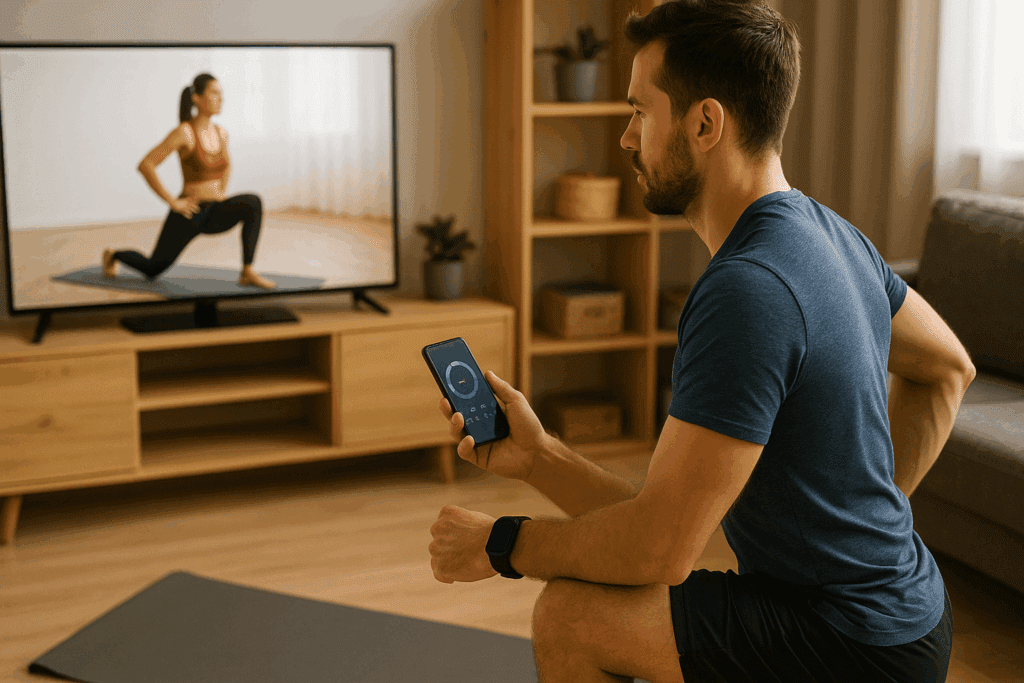
Exploring the Role of Technology in At-Home Fitness
Digital fitness platforms have revolutionized the way people engage with exercise, making it easier than ever to access expert instruction from the comfort of home. Whether it’s a thirty minute workout video streamed from a fitness app or a curated list of 30 minute exercise videos on YouTube, these resources provide convenience, variety, and scalability.
Fitness trackers and wearable devices also enhance the home workout experience. By monitoring heart rate, calories burned, and time spent in different intensity zones, these tools offer valuable feedback that can be used to tailor workouts. For example, a user might aim to stay in their target heart rate zone for at least 20 minutes of a 30 minute work session to maximize aerobic benefit.
Virtual communities can further enhance motivation and accountability. Whether it’s a Facebook group, a Reddit thread, or a mobile app with social features, connecting with others pursuing similar goals provides encouragement and camaraderie. Sharing progress, exchanging tips, or participating in monthly challenges can breathe new life into a home fitness journey.
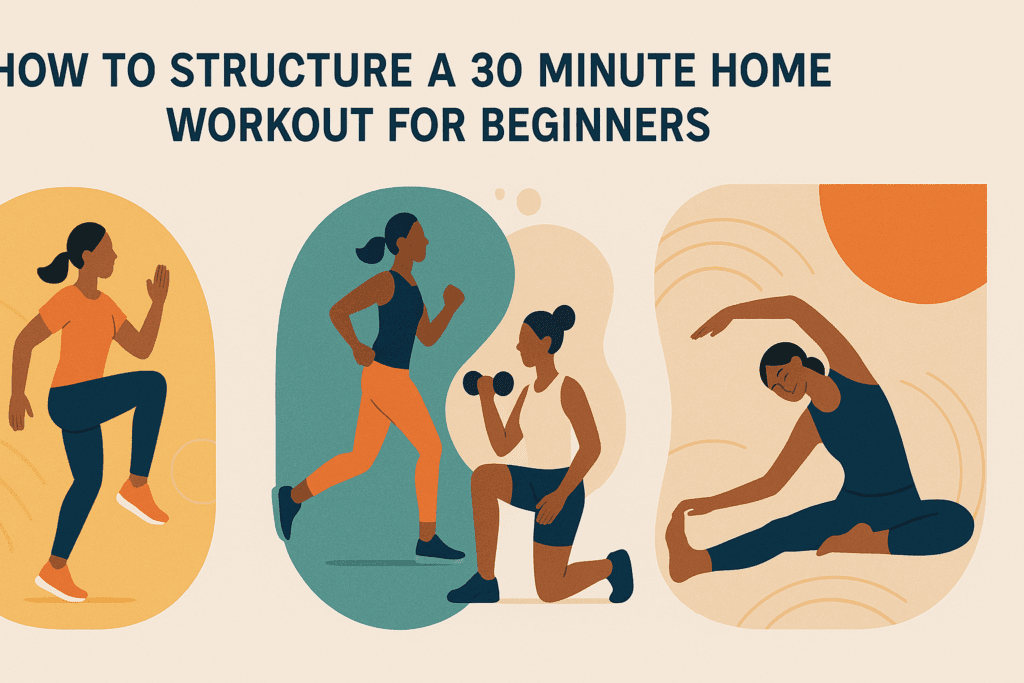
Building Long-Term Endurance Through Habit Formation
Endurance is not built overnight; it is cultivated through consistency and the gradual layering of effort. Establishing a daily or near-daily habit of engaging in a 30 minute exercise for beginners sets the foundation for future gains. Once the body adapts to regular movement, individuals can increase intensity, explore new workout modalities, or extend session duration.
Psychological endurance is just as important as physical. Developing the mindset to show up regularly, push through mental resistance, and stay engaged with the process is a skill in itself. Techniques such as visualization, positive self-talk, and setting process-based goals (e.g., “complete four workouts this week”) rather than outcome-based goals (e.g., “lose five pounds”) support sustainable behavior change.
Another valuable aspect of habit formation is identifying and addressing triggers that disrupt routine. Whether it’s lack of sleep, stress, or travel, understanding these challenges allows individuals to create backup plans or adjust expectations. This flexible, growth-oriented mindset is essential for maintaining progress and avoiding discouragement.
Frequently Asked Questions: Easy 30 Minute Workouts for Stamina and Endurance
What are the best times of day to complete a 30 minute workout for beginners, and does timing affect results?
While the ideal time to complete a 30 minute beginner workout routine largely depends on individual schedules and preferences, research suggests that timing may influence how effectively the body responds to exercise. Morning workouts, for instance, are often associated with improved consistency, enhanced mood throughout the day, and slightly greater fat oxidation. Afternoon sessions might be better suited for those aiming to build strength and power, as the body tends to be more flexible and alert later in the day. Evening routines can help release stress accumulated from the day, making them great for mental clarity and relaxation. Regardless of timing, the real key to results with a 30 minute exercise routine at home lies in consistency and effort rather than the clock.
How can I adapt a 30 minute exercise for beginners if I have joint pain or mobility issues?
Adapting an easy 30 minute workout for those with joint concerns requires thoughtful modification of high-impact movements. Instead of jumping jacks, for example, stepping side-to-side while swinging the arms can maintain aerobic intensity without strain. Chair-assisted squats, wall push-ups, and seated leg lifts are effective options for incorporating resistance while staying joint-friendly. It’s also helpful to use yoga mats or padded flooring during a 30 minute home workout for beginners to minimize pressure on the knees and wrists. Gradually increasing intensity over time and consulting a physical therapist or certified trainer can make these workouts safer and more sustainable for those with limited mobility.
Is a 30 minute workout video more effective than self-guided routines for building endurance?
A thirty minute workout video often provides structure, pacing, and motivation, making it a particularly effective tool for beginners developing endurance. Videos led by certified trainers typically incorporate progressive overload techniques, proper form guidance, and motivational cues that self-guided routines may lack. Additionally, a professionally designed 30 minutes workout often includes built-in rest intervals and dynamic transitions that help maintain optimal heart rate zones for cardiovascular gains. However, self-guided workouts allow for more personalized pacing and flexibility, especially for those with unique health concerns or time constraints. The best approach may combine both methods—starting with a 30 minute workout video and eventually transitioning to custom routines as confidence and fitness levels improve.
What are common mistakes to avoid when following a 30 minute beginner workout routine?
One common mistake among beginners is skipping the warm-up and cool-down phases, which are essential for injury prevention and muscle recovery. Another frequent oversight is choosing exercises that are either too advanced or too repetitive, which can lead to overuse injuries or boredom. People also tend to underestimate the importance of form; even in a short 30 minute exercise routine at home, improper alignment during squats, lunges, or push-ups can compromise results and increase injury risk. Additionally, beginners often do not hydrate adequately before or after a 30 minute work session, which may lead to fatigue or muscle cramps. Lastly, failing to listen to one’s body and pushing through pain rather than discomfort can be detrimental to long-term success.
Can a 30 minute exercise for beginners be split into shorter segments throughout the day?
Yes, breaking a 30 minute beginner workout routine into smaller increments—such as three 10-minute sessions or two 15-minute intervals—can still provide significant fitness benefits. This approach is especially helpful for individuals with unpredictable schedules, attention limitations, or low starting stamina. Studies have shown that accumulating physical activity in short bursts throughout the day can improve cardiovascular health, enhance insulin sensitivity, and boost energy levels. It also allows beginners to build confidence gradually without feeling overwhelmed. Whether performed all at once or in chunks, a total of 30 minutes workout time still supports long-term endurance improvements when done consistently.
How do I choose the right 30 minute workout video if I’m a complete beginner with no fitness background?
Choosing the right 30 minute workout video starts with evaluating your current fitness level, goals, and any physical limitations. Look for videos specifically labeled as beginner-friendly, low-impact, or restorative, as these are designed with proper pacing and easier movements. It’s also beneficial to select instructors who provide modifications throughout the workout, allowing you to adjust based on how your body feels. Reviews and previews can offer additional insight into whether the video emphasizes cardio, strength, or a combination of both. Incorporating a mix of formats from different 30 minute exercise videos over time helps keep workouts fresh and engages various muscle groups, which can accelerate progress.
How does a 30 minute home workout for beginners compare to traditional gym training in terms of stamina building?
While gym-based training offers access to specialized equipment and personal trainers, a 30 minute home workout for beginners can be just as effective when designed strategically. Many gym-goers tend to spend additional time commuting, waiting for machines, or engaging in less focused activity. At home, a 30 minute exercise routine for beginners can be tightly structured with minimal downtime, leading to a more efficient calorie burn and cardiovascular response. Incorporating compound movements such as squats, planks, and modified burpees in your home routine can replicate many of the stamina-building effects of gym machines. Moreover, the comfort of home can reduce performance anxiety and encourage long-term consistency.
What mental health benefits can I expect from a regular 30 minute exercise routine at home?
Engaging in a regular 30 minute exercise for beginners at home has been linked to notable improvements in mental clarity, stress management, and emotional resilience. Physical activity triggers the release of endorphins and other neurotransmitters such as dopamine and serotonin, which are associated with reduced anxiety and enhanced mood. Moreover, the sense of accomplishment that comes from completing a 30 minute workout for beginners can help reinforce positive self-image and reduce feelings of helplessness or low motivation. Developing a daily routine also introduces structure and purpose, which is particularly beneficial for individuals coping with uncertainty or emotional fatigue. Over time, these psychological benefits can rival or even exceed those achieved through more intensive or longer-duration workouts.
Are there nutritional strategies that can enhance the effectiveness of a 30 minutes workout?
Proper nutrition plays a crucial role in maximizing the benefits of a 30 minutes workout, especially for beginners working on endurance. Consuming a small, balanced snack 30 to 60 minutes before your workout—such as a banana with almond butter or Greek yogurt with berries—can provide the necessary energy to maintain effort throughout the session. Post-workout, replenishing with protein and complex carbohydrates supports muscle recovery and glycogen restoration. Staying well-hydrated before, during, and after a 30 minute exercise routine at home is equally important for performance and focus. Over time, optimizing your diet to align with your workout intensity and goals will amplify stamina gains and accelerate recovery.
What should I do if I plateau after consistently doing a 30 minute work session daily?
Plateaus are a common part of any fitness journey, including when following a consistent 30 minute beginner workout routine. To break through stagnation, consider increasing workout intensity through added resistance, faster pacing, or incorporating interval training. You might also benefit from exploring new 30 minute exercise videos that focus on different muscle groups or movement styles, such as Pilates, HIIT, or dance cardio. Varying the format not only challenges your body but also re-engages your mind, keeping motivation high. Additionally, tracking performance metrics like heart rate, reps completed, or perceived exertion can offer insight into subtle gains that might not be visible externally, reminding you of your progress and potential for growth.
Conclusion: Elevate Your Energy and Health with a 30 Minute Exercise Routine at Home
Committing to a consistent 30 minute exercise routine at home is one of the most empowering and accessible ways to improve endurance, enhance stamina, and boost overall well-being. For beginners, this approach offers a structured yet flexible entry point into the world of fitness. Whether you follow a thirty minute workout video, cycle through various 30 minute exercise videos, or design your own easy 30 minute workout, the key lies in showing up regularly and progressing at your own pace.
Through intentional movement, gradual habit-building, and the strategic use of technology, even those with minimal experience can make meaningful gains in health and vitality. A 30 minute beginner workout routine may seem simple, but its impact extends far beyond physical appearance. It supports heart health, boosts mood, sharpens focus, and builds resilience. As confidence grows, so too does the desire to explore new fitness challenges, making the journey not only effective but also enjoyable and fulfilling. With just 30 minutes a day, you can transform your energy, elevate your stamina, and take charge of your health—one rep, one breath, and one day at a time.
Was this article helpful? Don’t let it stop with you. Share it right now with someone who needs to see it—whether it’s a friend, a colleague, or your whole network. And if staying ahead on this topic matters to you, subscribe to this publication for the most up-to-date information. You’ll get the latest insights delivered straight to you—no searching, no missing out.
Further Reading:
How to Increase Stamina: 16 Ways to Power Up a Workout

